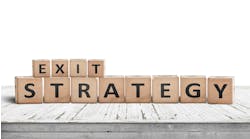Estimating is like selling used cars. That can’t be, you say? The idea conjures up the image of a slick salesman in a plaid sports jacket plying all kinds of fast tricks to get a customer to “sign on the dotted line.” That may be the stereotype, but we know customers and sales professionals are way above that today.
Still, estimating is like selling used cars. How can that be? Simple. Both transactions are selling a unique product.
As an example, imagine a beautiful lime-green 1977 Vega coupe on a used car lot. It is a one-of-a-kind. No other Vega will be the same color, in the same condition, with the same options, with that mileage, and for sale right here, right now. Its asking price may be based on information in a book or other guide, but its real value is its final selling price.
What if the buyer has always wanted a lime-green Vega? If this is his or her dream car, they would probably be willing to pay quite a bit more than its “book” price for it. What if the seller has had it on his lot for the last year or two? He or she is afraid of never selling it, and perhaps, the seller would be willing to accept quite a bit less than “book” price for it.
The reality is somewhere in between, matching the needs of both buyer and seller, based on a guide. This is a unique situation between a buyer and a seller concerning a unique product.
Estimating works something like that. Each transaction is a unique repair. A repairer is selling work. An insurer is buying service. In between are countless decision points of replace vs. repair, included vs. not included, part types, rates, discounts, and so on. Each has business concerns including cost, safety, quality and cycle time.
That damaged vehicle you are estimating is a unique situation. No other year, make, model and color vehicle will have damage in the same place, from the same direction of impact, and with the same force.
The seller (repairer) and buyer (insurance representative) will work toward a price based on "book" values, but the final price depends on each side's needs and expectations. If the shop is booked three months ahead, there is less incentive to accept lower margin work. If the insurance company has a fleet account that needs a lot of local work done right now, some concessions may be considered as a trade off for steady volume. The reality is somewhere in between these extremes.
Each side is looking through a different set of needs and expectations and, of course, will see it differently. Let the negotiations begin!
For most folks, negotiating is difficult and to be avoided at all costs. After all, it is much easier to simply refer to a set of instructions, such as procedure pages, DRP agreements, and insurance company guidelines. But these can’t cover every contingent for every repair when each repair is unique.
Negotiating is a skill and, like any other skill, takes knowledge and practice. It isn’t easy, just necessary. Good negotiating skills are an important part of effective estimating. Good negotiating doesn’t mean you will get everything you ever dreamed of or that you must give the store away. Good negotiating means both sides can be satisfied with the final agreement.
"Negotiating in the classic diplomatic sense assumes parties more anxious to agree than to disagree."
Dean Acheson




